Commercial Property Executive: Is the Multistory Industrial Niche Taking Off?
Platform Development Leader Adam Bortz and Senior Project Manager Monica Marulanda were featured in Commercial Property Executive to discuss current multi-story trends in the industrial sector.
Read more or listen here.
Privacy Policy
7 Office Amenity Fails—and Smarter Alternatives that Boost ROI
Avoiding Costly Amenity Missteps: Smarter Investments That Pay Off
Not every “shiny” amenity boosts leasing velocity or asset value, and in a market where every dollar counts, missed investments can add up fast. In this piece, we unpack seven common capital-project misfires that often look good on paper but fall flat in practice. More importantly, we share seven proven, lower-risk upgrades that today’s tenants will use, value, and are willing to pay for.
1. Dark, Unstaffed Café → Smart, Self-Serve Micro-Market
Where it Falls Short
Landlords often compete to offer tenants a food and beverage amenity, such as upscale coffee bars, hoping to energize the lobby and create a vibrant tenant experience. But without steady foot traffic or a dedicated operator to manage staffing, many of these cafés sit dark after launch, quickly turning into expensive storage space.
A Better Approach
Modular micro-markets or premium vending machines (scan-and-go fridges, bean-to-cup machines) need less than 200 SF, require no full-time staff, and can adapt to demand. Tenants still get quality snacks and coffee; landlords avoid expensive salary commitments. Just because these are simple doesn’t mean they can’t be beautifully designed as well. Focal points to lure activity into a key part of a property.
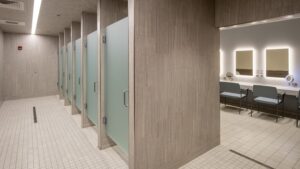
2. Boutique Fitness without Locker Rooms → Premium Private Changing Suites
Where it Falls Short
Building owners rush in bikes, treadmills, and Peloton screens but skip showers and secure lockers to save cap-ex. Tenants try the gym once, then cancel because no one wants to sweat through a 2 p.m. meeting.
A Better Approach
If space is limited, consider premium changing suites, two to three private pods with a shower and vanity, instead of a full locker room. Add towel service through a third-party provider to enhance the offering. Utilization rises, while costs stay well below a traditional build-out.
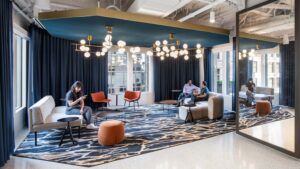
3. The Oversized, Underused Game Room → Flexible Social Hub
Where it Falls Short
Ping-pong tables and gaming lounges might sound fun, but in professional-services buildings with quieter cultures, they often go unused, and unlike flexible meeting or office space, that 1,000 SF game room doesn’t easily convert to something leasable.
A Better Approach
Design flexible social hubs: movable walls, modular lounge furniture, hidden AV. By day, it’s a breakout workspace; by evening, a tenant-event venue. If demand shifts, the zone can be downsized or monetized as a conference center space without demolition.
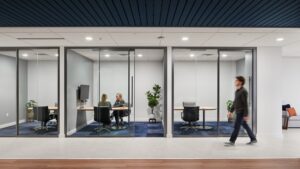
4. The Podcast Room No One Reserves → Convertible Content-Creation Nook
Where It Falls Short
Dedicated podcast booths seemed like a future-proof solution until most tenants realized they release one episode a quarter. The single-purpose build-out sits dark while meeting rooms overflow.
A Better Approach
Design a content-creation nook: acoustic panels, green screen pull-down, ring light, and detachable microphones that tuck away. In “studio” mode, it records video, audio, or webinars; in default mode, it serves as a phone or two-top Zoom room.
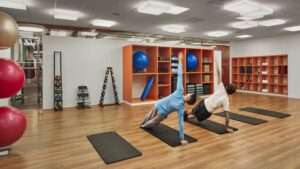
5. Indoor Putting Green → Multi-Purpose Wellness Studio
Where It Falls Short
A synthetic turf putting strip looks clever on a tour, but usage data shows fewer than 5% of employees practice putts at work. Worse, the turf can’t convert to another function without full replacement.
A Better Approach
Create an 800-SF wellness studio featuring a rubberized floor, mirrored walls, and flexible storage for yoga mats, barre bars, and guided meditation setups. Programming can adapt to tenant needs, whether it’s a sunrise stretch, lunchtime HIIT, or after-hours mindfulness session, driving high utilization with minimal renovation risk.
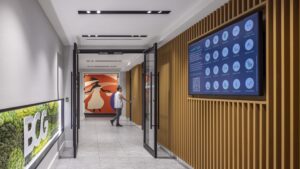
6. Over-Engineered Building App → QR-Based Amenity Booking & Wayfinding
Where It Falls Short
Custom property apps often come with six-figure price tags and ongoing maintenance, but rarely deliver. With adoption rates typically under 25%, most tenants still rely on email or Slack to book space.
A Better Approach
Deploy QR code touch points at amenity entrances: scan to reserve a meditation pod, order coffee, or get wayfinding to the bike storage. No downloads, minimal upkeep, and analytics feed landlord asset dashboards.
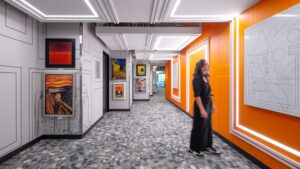
7. Lobby Water Feature → Living Digital Art Wall
Where It Falls Short
Fountains and reflecting pools leak, add slip hazards, and send common-area utility costs up (pumps, water loss). They’re also impossible to repurpose.
A Better Approach
Mount a high-resolution LED art wall that showcases local artists, data-driven generative art, or tenant-brand takeovers. Zero plumbing, easy content refresh, and sponsors can underwrite segments, turning an expense into marketing revenue.
Ready to Audit Your Amenity Strategy?
In today’s market, amenities must do more than look good; they need to meet evolving tenant expectations and deliver strong ROI. NELSON’s Asset Strategy team is here to help you make smarter, data-informed decisions about where to invest for maximum return and where to rethink. Let’s talk about how to align your amenities with real market demand and measurable value.
Joanne Jackson
Michael Otto
Johnnie Walker Madrid: The Ultimate Flagship Experience
Located in the heart of Madrid, Spain, Johnnie Walker–an iconic scotch whiskey brand–has opened a flagship destination perfect for whiskey experts, whiskey beginners or those who are just looking to enjoy a beverage or learn something new. The immersive shop offers visitors the chance to deep-dive into the flavors and stories of the brand.
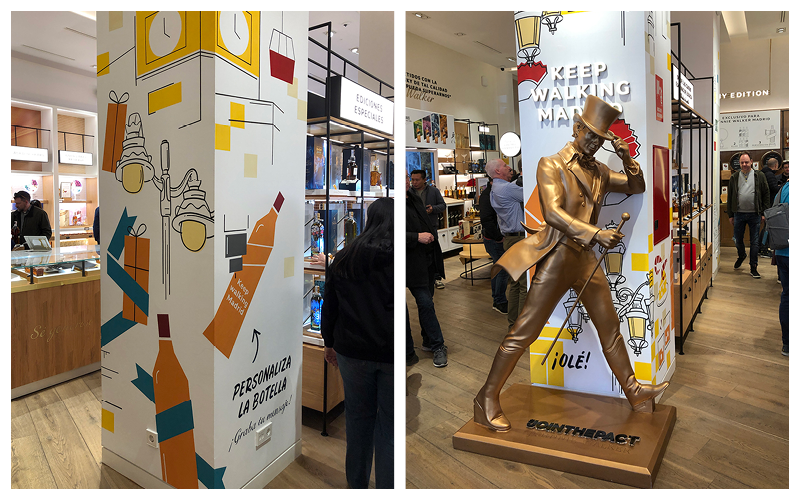
Features inside the store include a hosting area where guests can explore the craft of cocktail making or take a seat at a tasting table where they can deep dive into the flavors of Johnnie Walker.
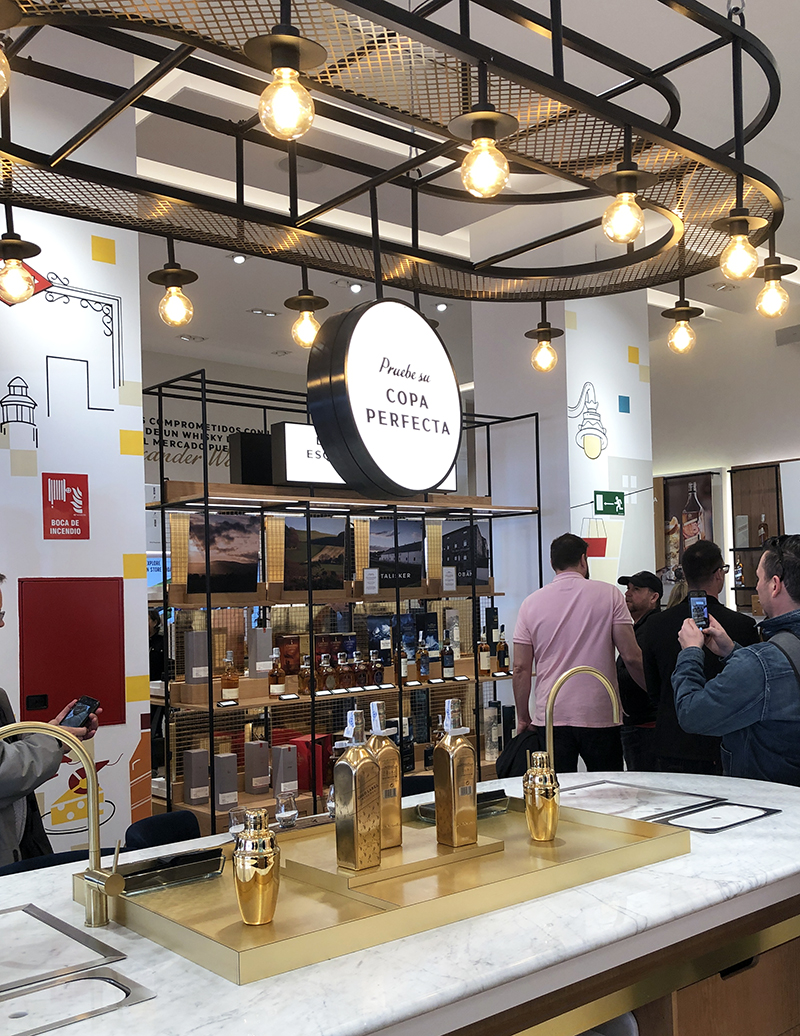
A unique personalization station, where visitors can discover, choose, and personalize an individual bottle of whiskey, is located along one wall accompanied by unique gifts and one-of-a-kind bottle labels. This not only allows guests to get closer to the product but allows them to make a memorable experience they will forever associate with the brand.

In addition to the interactive elements within the space, the Johnnie Walker flagship also acts as a stage for the brand. Displaying the brand’s extensive portfolio of whiskeys, the store is home to exclusive products, curated collaborations, and limited edition collections. Store associates are well educated in the brand’s rich heritage offering an educational element to the store’s experience, providing in-depth knowledge of whiskey flavor profiles.
Adding a digital element to space, an interactive screen allows customers to tap into a virtual map that explains the history of each whiskey and which region it came from.
Curious to see what else we explored while at EuroShop 2020? Click here for key takeaways and more coverage!
Joseph Hirsch
Nicole Washburn
John “Ozzie” Nelson Jr.
Work Design: The Future of Law Offices Does Without Hierarchical Spaces
Kristin Cerutti of NELSON Worldwide explores how law office design is moving away from hierarchical spaces and adopting the free-thinking plan. Read more with Work Design here.